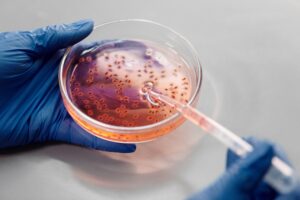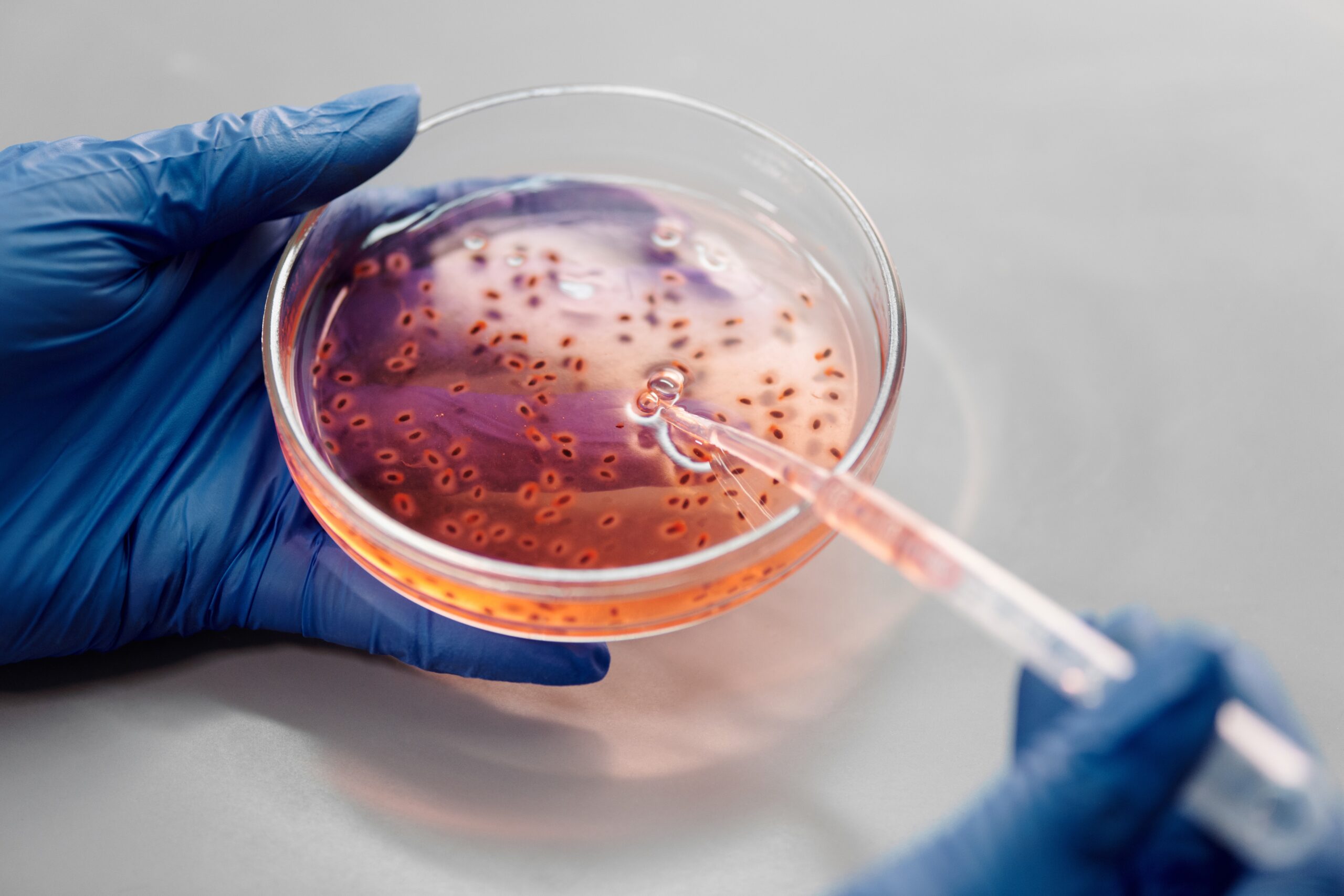
Human hereditary material, or DNA, is a long molecule that contains the information organisms need to both develop and reproduce.
Every cell in the body contains DNA, which is transmitted from parent to child via heredity. DNA is located within chromosomes.
What is DNA?
The acronym, DNA is an abbreviation for deoxyribonucleic acid.
Deoxyribonucleic acid is a nucleic acid that contains the genetic instructions used in the development and functioning of all known living organisms and some viruses.
The main role of DNA molecules is the long-term storage of information. All life forms depend on this molecule that passes along the instructions for growth, development, functioning and reproduction.
DNA stands for Deoxyribonucleic Acid, a double-stranded helix held together by hydrogen bonding. DNA is an essential part of almost all living cells in plants and animals.
It can be found in two basic structures, “the B-form” which is a double helix, and “the A-form”, which appears as two separate strands. The A form can mutate into the B form at times.
DNA Structure
The basic structure of DNA components is known to all. Deoxyribose sugar forms the basic part of the nucleotide. It has five carbon atoms and is found in the ring form.
The phosphate group and the nitrogen-containing base adenine, cytosine, guanine and thymine (A,C,G and T) are connected to sugar by covalent bonds.
DNA is a nucleic acid, these acids contain chains of deoxyribose sugars with bases attached. There are two strands of this nucleic acid, and each strand is a mirror image of the other.
The bases line up in matching pairs with their paired bases.
Adenine (A) always pairs with thymine (T), and cytosine(C) always pairs with guanine(G).
The two strands twist together to form a helical structure. They run in opposite directions each other. A backbone of alternating sugar and phosphate groups runs down the center between the two strands.
The bases are on the outside of the helix, sticking out from its sides. There are about 3 billion base pairs that form chromosomes
The discovery of DNA
Many people believe that in the 1950s, American biologist James Watson and English physicist Francis Crick found DNA.
This is not correct.
DNA was first identified by Swiss chemist Friedrich Miescher in the late 1860s. Then, during the following decades, other scientists, notably Phoebus Levene and Erwin Chargaff, conducted research to determine the molecular composition of DNA.
In 1944, a graduate student in Bern, Maurice Wilkins, began working under X-ray crystallographer Rosalind Franklin to determine the structure of DNA.
Although Wilkins and his colleagues were unsuccessful in this effort, their work showed that DNA was made up of two intertwined strands that were held together by weak chemical bonds.
This feature suggested to Watson and Crick that the structure of DNA could be determined by taking a careful look at these chemical bonds.
Then, in 1952, after completing his doctorate degree, James Watson was hired as a postdoctoral research fellow at Cavendish Laboratory in Cambridge, England.
At this laboratory, he met another scientist Francis Crick who shared his interest in discovering the structure of DNA.
After several months of collaboration, in 1953, with further encouragement from chemist Linus Pauling and additional data supplied by Rosalind Franklin and Maurice Wilkins, James Watson and Francis Crick were able to solve the 3 billion base-pair puzzle of DNA’s double helix.
Susumu Tonegawa
In 1987, the first scientist to receive a Nobel Prize for work related to DNA was Susumu Tonegawa from Japan.
He was awarded the Prize in Physiology or Medicine “for his discovery of the genetic principle for generation of antibody diversity.” This process is known as VDJ recombination or VJ recombination for short.
The Procedure of How DNA Discovered
DNA is made up of nucleotides, arranged in different combinations to form genes. Genes are the basic units of heredity and allow living organisms to pass on hereditary information from one generation to the next.
Different combinations lead to different biological traits.
VJ recombination is a process by which B cells (a type of white blood cell) produce antibodies without undergoing genetic changes. When cells respond to foreign antigens or invaders, such as bacteria and viruses, they make germline antibody gene sequences.
These V regions of DNA break apart and rearrange themselves to form different antibody specificities (antibody diversity).
The concept of VJ recombination was first proposed by Susumu Tonegawa in 1985. It is a form of genetic recombination that does not involve crossing-over of chromosomal material between two different chromosomes or sister chromatids during meiosis or mitosis. Instead, it occurs through the somatic mutation of antibody genes.
- Read also: How did we develop with a COVID-19 immunization
- Read also: Who discovered insulin
The Key Players of How DNA Discovered
Tonegawa Susumu (1939-), Japanese biochemist and cell biologist, received the Nobel Prize in Physiology or Medicine in 1987 for discovering genetic recombination by random rearrangement of immunoglobulin genes to form antibodies.
This research was performed while Tonegawa was on the faculty of the Massachusetts Institute of Technology.
Francis Crick (1916-2004), English physicist and molecular biologist, co-discoverer with James Watson in 1953 the double-helix structure of DNA.
James Watson (1928-), an American molecular biologist, received the Nobel Prize in Physiology or Medicine in 1962 with Francis Crick for their discovery of the structure of DNA.
Watson also co-discovered with Maurice Wilkins in 1953 the double-helix structure of DNA.
Rosalind Franklin (1920-1958), English physical chemist, X-ray crystallographic hel, and biophysicist, provided experimental evidence for the chemical structure of DNA and working out its molecular structure.
Maurice Wilkins (1916-), an English X-ray crystallographer and biophysicist, made extensive use of X-ray diffraction methods to study the structure of DNA.
He shared the 1962 Nobel Prize in Physiology or Medicine with James Watson and Francis Crick for their discoveries concerning the molecular structure of nucleic acids.
James Dewey Watson (1928-) American biologist, geneticist, and zoologist. He is well known for co-discovering with Francis Crick the double helix structure of DNA in 1953.
This work was published in April 1953 and won them the Nobel Prize for Physiology or Medicine in 1962. He was an early proponent of the “central dogma” of molecular biology, which states that RNA molecules (for example) encode genetic information and transfer it from DNA to protein.
Summery
From the discovery of DNA to today scientists have worked on how DNA works in our body. There is still more work for scientists to do but these are the key player that made this possible.
With further research maybe scientists will gain more knowledge on how DNA works in our bodies.
I hope you enjoyed reading about How DNA Discovered



